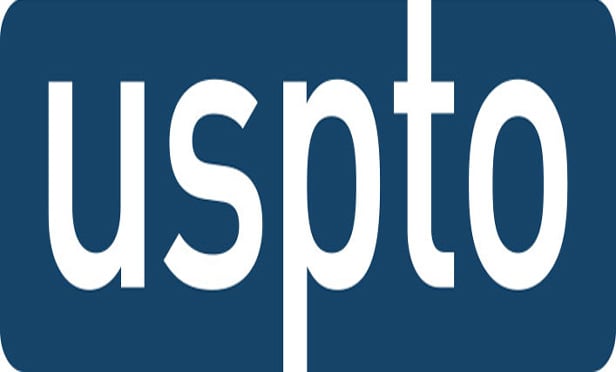Features

Legal Operations Chiefs Say Managing Technology and Cutting Costs Are Main Priorities, Not Blockchain or AI
In-house legal operations chiefs see their main priorities as managing legal technology and cost-cutting, primarily on outside counsel spending. Blockchain remains a confusing concept to them, while artificial intelligence is the hottest topic of conversation.
Features

'Dark Overlord' Hack Shows Mounting Cyber Risks for Law Firms
<b><i>The Hacker Group Wants Ransom Payments from Dozens of Firms Involved In the Sept. 11 Litigation, and Experts Warn That More Attacks Are Coming</b></i><p>Leaders of those law firms are all likely scratching their heads about how to handle a recent announcement from a nebulous hacker entity calling itself the “Dark Overlord,” which claims to be in possession of 18,000 legal and insurance documents pertaining to the court fight.
Features

Sales Speak: The Reason Companies Aren't Buying Is How Lawyers Are Selling
Conventional business development methods ignore an important part of the legal services selling process: the legal services buying process.
Features

Voice of the Client: So Important, It Comes First
It is vital to have effective marketing and communications, but if legal and business professionals don't listen for — and hear — the Voice of the Client, we risk missing the mark in our strategy, messaging and positioning.
Features

Digital Dive: How to Create (at least) Nine Pieces of Content in One Hour
In just one hour, would it be valuable to have at least nine pieces of content that your lawyer clients may use on your website and on social media?
Features

Planning for the Crisis That Will Strike Your Law Firm
Reputation is everything. It only takes one misstep to cause irreparable damage to a law firm and its attorneys. As we get into 2019, it is imperative for law firms to plan for the effective management of myriad incidents that may have an adverse impact on the business of law and the reputation of the firm.
Features

11th Circuit Weighs in on Intersection of Lanham Act and FDCA Protein Powder Labeling Requirements
A battle between two dietary supplement manufacturers has revived interested in the intersection between the Lanham Act and federal labeling regulations. The issue: can an advertiser challenge a competitor's product label for false advertising under the Lanham Act if it complies with applicable federal regulations?
Features

The USPTO Brings New Guidance to the Section 101 Quandary
<b><i>Part Two of a Two-Part Article</b></i><p>USPTO Attempts to Provide Greater Clarity for Patent-Eligible Subject Matter
Columns & Departments

IP News
Kapoor v. National Rifle Association of America
Features

First Department Construes Open Space Requirement
In Peyton v. New York City Board of Standards and Appeals, the First Department faced a difficult question: when a zoning lot includes more than one building, can open space accessible to residents of one building, but not to residents of the other buildings, count as open space within the meaning of the New York City Zoning Resolution?
Need Help?
- Prefer an IP authenticated environment? Request a transition or call 800-756-8993.
- Need other assistance? email Customer Service or call 1-877-256-2472.
MOST POPULAR STORIES
- The 'Sophisticated Insured' DefenseA majority of courts consider the <i>contra proferentem</i> doctrine to be a pillar of insurance law. The doctrine requires ambiguous terms in an insurance policy to be construed against the insurer and in favor of coverage for the insured. A prominent rationale behind the doctrine is that insurance policies are usually standard-form contracts drafted entirely by insurers.Read More ›
- A Lawyer's System for Active ReadingActive reading comprises many daily tasks lawyers engage in, including highlighting, annotating, note taking, comparing and searching texts. It demands more than flipping or turning pages.Read More ›
- The Brave New World of Cybersecurity Due Diligence in Mergers and Acquisitions: Pitfalls and OpportunitiesLike poorly-behaved school children, new technologies and intellectual property (IP) are increasingly disrupting the M&A establishment. Cybersecurity has become the latest disruptive newcomer to the M&A party.Read More ›
- Abandoned and Unused Cables: A Hidden Liability Under the 2002 National Electric CodeIn an effort to minimize the release of toxic gasses from cables in the event of fire, the 2002 version of the National Electric Code ("NEC"), promulgated by the National Fire Protection Association, sets forth new guidelines requiring that abandoned cables must be removed from buildings unless they are located in metal raceways or tagged "For Future Use." While the NEC is not, in itself, binding law, most jurisdictions in the United States adopt the NEC by reference in their state or local building and fire codes. Thus, noncompliance with the recent NEC guidelines will likely mean that a building is in violation of a building or fire code. If so, the building owner may also be in breach of agreements with tenants and lenders and may be jeopardizing its fire insurance coverage. Even in jurisdictions where the 2002 NEC has not been adopted, it may be argued that the guidelines represent the standard of reasonable care and could result in tort liability for the landlord if toxic gasses from abandoned cables are emitted in a fire. With these potential liabilities in mind, this article discusses: 1) how to address the abandoned wires and cables currently located within the risers, ceilings and other areas of properties, and 2) additional considerations in the placement and removal of telecommunications cables going forward.Read More ›
- Guidance on Distributions As 'Disbursements' and U.S. Trustee FeesIn a recent case from the Bankruptcy Court for the District of Delaware, In re Paragon Offshore PLC, the bankruptcy court provided guidance on whether a post-plan effective date litigation trust's distributions constituted disbursements subject to the U.S. Trustee fee "tax."Read More ›
